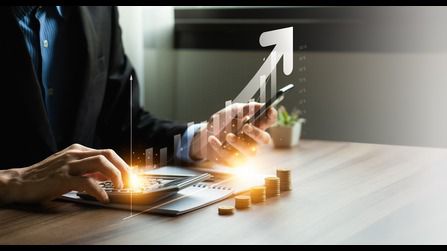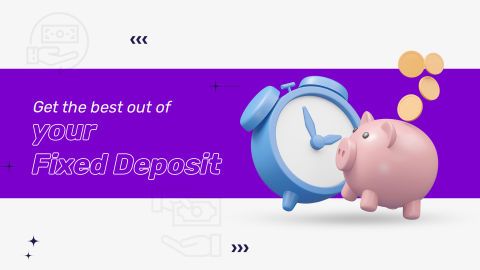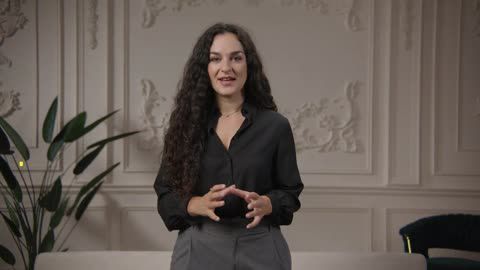Remember, it's never too late to start investing. If you’re investing in your 30s, try implementing the following tips:
Draft a solid financial plan
By the time you turn 30, you should have a solid financial plan in place. Although unforeseen events can take you by surprise, ensure that you have clear short and long-term goals and plans for accomplishing them. For instance, buying a home is a short-term goal, while planning for retirement is a long-term one. A solid financial plan also takes cognisance of sudden emergencies like job loss or sudden home repairs. Make sure you have an emergency fund set up with ample funds to cover at least 6 months of expenses. If you are looking for a safe investment option, you can consider fixed deposit. They offer guaranteed returns and a fixed interest rate throughout your investment tenure.
Building a strong and lasting portfolio
When you’re investing in your 30s, you can afford to take on more risks. Since you have a longer investing horizon, you can worry less about short-term volatility and focus on generating better long-term returns. Generally, investments like stocks and equity mutual funds have a higher risk quotient and return potential. Since you have decades before retirement, you can afford to dedicate 70%-80% of your investment portfolio to high-return-generating investments. That said, you should also diversify your investments across asset classes and sectors to build a strong portfolio.
Maintain strict financial discipline
Financial discipline is the bedrock of a well-rounded investment strategy. Setting aside a fixed sum of money every month for your savings schemes and investments can be challenging at first, but once you develop a saving habit, the process becomes smoother. Instead of manually transferring your contributions to various investment instruments, try automating savings. Set auto-deduct mandates to ensure a fixed sum gets invested into the investment avenues of your choosing every month.
Use schemes based on the power of compounding
Select the investment products that offer compounding benefits to maximise your returns. Investments like mutual funds growth plans compound your earnings. Under the power of compounding, your returns on the investment are reinvested to yield further earnings. Without the power of compounding, your returns may lose their value over time due to inflationary pressures.
Even in an emergency, don't touch your retirement funds
As mentioned earlier, you should already have an emergency fund invested in an FD or liquid mutual fund to cover emergency expenses. In the absence of an emergency fund, you may be tempted to use your retirement funds to meet unexpected expenses. At first, this may seem like a prudent choice since your retirement is still a couple of decades away. However, withdrawing from retirement assets like PPF can compromise the compounding power of these funds.
You can consider investing Bajaj Finance Fixed Deposit. With a top-tier AAA rating from financial agencies like CRISIL and ICRA, they offer one of the highest returns, up to 7.30% p.a.
Whenever you can, increase your savings rate
In the beginning, you can start with a small amount. However, your contribution does not have to remain the same throughout your investment journey. In fact, you should always strive to increase your savings rate and contributions over time. Each time you receive a salary hike, bonus, promotion, or any other form of additional income, you can invest the same to boost your portfolio. Even a 10%-15% increase in your contributions annually can make a significant difference to your overall corpus.









 Deals starting @99
Deals starting @99 Festive deals
Festive deals Min. 50% off
Min. 50% off
 Wallet to Bank
Wallet to Bank
 Loan Against Shares
Loan Against Shares Loan Against Mutual Funds
Loan Against Mutual Funds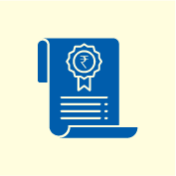 Loan Against Bonds
Loan Against Bonds Loan Against Insurance Policy
Loan Against Insurance Policy ESOP Financing
ESOP Financing Easy EMI Loan
Easy EMI Loan Two-wheeler Loan
Two-wheeler Loan Loan for Lawyer
Loan for Lawyer Industrial Equipment Finance
Industrial Equipment Finance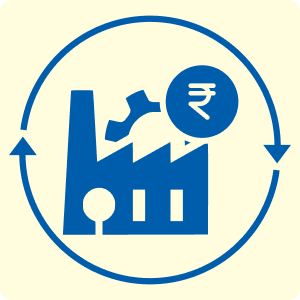 Industrial Equipment Balance Transfer
Industrial Equipment Balance Transfer Industrial Equipment Refinance
Industrial Equipment Refinance Personal Loan Branch Locator
Personal Loan Branch Locator Used Tractor Loan
Used Tractor Loan Loan Against Tractor
Loan Against Tractor Tractor Loan Balance Transfer
Tractor Loan Balance Transfer
 Smartphones
Smartphones Led TVs
Led TVs Washing Machines
Washing Machines Laptops
Laptops Refrigerators
Refrigerators Air Conditioner
Air Conditioner Air Coolers
Air Coolers
 Get Bajaj Prime
Get Bajaj Prime
 Trading Account
Trading Account Open Demat Account
Open Demat Account Margin Trading Financing
Margin Trading Financing Share Market
Share Market Invest in IPO
Invest in IPO All stocks
All stocks Top gainers
Top gainers Top losers
Top losers 52 week high
52 week high 52 week low
52 week low Loan against shares
Loan against shares
 Business Loan
Business Loan Secured Business Loan
Secured Business Loan Loan against property
Loan against property Loans against property balance transfer
Loans against property balance transfer Loan against shares
Loan against shares Home Loan
Home Loan Loans against mutual funds
Loans against mutual funds Loan against bonds
Loan against bonds Loan against insurance policy
Loan against insurance policy
 Term Life Insurance
Term Life Insurance ULIP Plan
ULIP Plan Savings Plan
Savings Plan Family Insurance
Family Insurance Senior Citizen Health Insurance
Senior Citizen Health Insurance Critical Illness Insurance
Critical Illness Insurance Child Health Insurance
Child Health Insurance Pregnancy and Maternity Health Insurance
Pregnancy and Maternity Health Insurance Individual Health Insurance
Individual Health Insurance Low Income Health Insurance
Low Income Health Insurance Student Health Insurance
Student Health Insurance Group Health Insurance
Group Health Insurance Retirement Plans
Retirement Plans Child Plans
Child Plans Investment Plans
Investment Plans
 Apply for Gold Loan
Apply for Gold Loan Transfer your Gold Loan with Us
Transfer your Gold Loan with Us Gold Loan Branch Locator
Gold Loan Branch Locator
 ULIP Plan
ULIP Plan Savings Plan
Savings Plan Retirement Plans
Retirement Plans Child Plans
Child Plans Free Demat Account
Free Demat Account Invest in Stocks
Invest in Stocks Invest in IPO
Invest in IPO Margin Trading Facility
Margin Trading Facility Fixed Deposit Branch Locator
Fixed Deposit Branch Locator

 Bike
Bike Scooter
Scooter Electric Vehicle
Electric Vehicle Best Sellers
Best Sellers Popular Brands
Popular Brands
 Check your Credit Score
Check your Credit Score
 Engagement Zone
Engagement Zone Game Zone
Game Zone
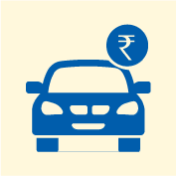 New Car Loan
New Car Loan Used Car Loan
Used Car Loan Loan Against Car
Loan Against Car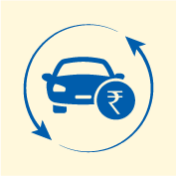 Car Loan Balance Transfer and Top-up
Car Loan Balance Transfer and Top-up

 Personal Loan EMI Calculator
Personal Loan EMI Calculator Personal Loan Eligibility Calculator
Personal Loan Eligibility Calculator Home Loan EMI Calculator
Home Loan EMI Calculator Home Loan Eligibility Calculator
Home Loan Eligibility Calculator Good & Service Tax (GST) Calculator
Good & Service Tax (GST) Calculator Flexi Day Wise Interest Calculator
Flexi Day Wise Interest Calculator Flexi Transaction Calculator
Flexi Transaction Calculator Secured Business Loan Eligibility Calculator
Secured Business Loan Eligibility Calculator Fixed Deposits Interest Calculator
Fixed Deposits Interest Calculator Two wheeler Loan EMI Calculator
Two wheeler Loan EMI Calculator New Car Loan EMI Calculator
New Car Loan EMI Calculator Used Car Loan EMI Calculator
Used Car Loan EMI Calculator All Calculator
All Calculator
 Hot Deals
Hot Deals Clearance Sale
Clearance Sale Kitchen Appliances
Kitchen Appliances Tyres
Tyres Camera & Accessories
Camera & Accessories Mattresses
Mattresses Furniture
Furniture Watches
Watches Music & Audio
Music & Audio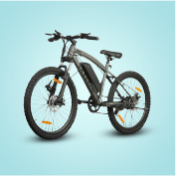 Cycles
Cycles Mixer & Grinder
Mixer & Grinder Luggage & Travel
Luggage & Travel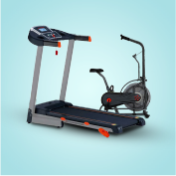 Fitness Equipment
Fitness Equipment Fans
Fans
 Personal Loan for Doctors
Personal Loan for Doctors Business loan for Doctors
Business loan for Doctors Medical Equipment Finance
Medical Equipment Finance Secured Business Loan
Secured Business Loan Loan against property
Loan against property Loan against share
Loan against share Gold Loan
Gold Loan Home Loan
Home Loan
 Smartphones
Smartphones LED TVs
LED TVs Washing Machines
Washing Machines Laptops
Laptops Refrigerators
Refrigerators Air Conditioners
Air Conditioners Air Coolers
Air Coolers Water Purifiers
Water Purifiers Tablets
Tablets Kitchen Appliances
Kitchen Appliances Mattresses
Mattresses Furniture
Furniture Music and Audio
Music and Audio Cameras & Accessories
Cameras & Accessories Cycle
Cycle Watches
Watches Tyres
Tyres Luggage & Travel
Luggage & Travel Fitness Equipment
Fitness Equipment Tractor
Tractor
 Home Loan
Home Loan Transfer your existing Home loan
Transfer your existing Home loan Loan against Property
Loan against Property Home Loan for Salaried
Home Loan for Salaried Home loan for self employed
Home loan for self employed Home Loan EMI Calculator
Home Loan EMI Calculator Home Loan eligibility calculator
Home Loan eligibility calculator Home Loan balance transfer
Home Loan balance transfer
 Easy EMI
Easy EMI Offer World
Offer World 1 EMI OFF
1 EMI OFF New Launches
New Launches Zero Down Payment
Zero Down Payment Clearance Sale
Clearance Sale Bajaj Mall Sale
Bajaj Mall Sale
 Articles
Articles
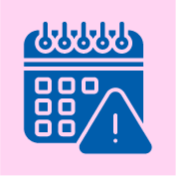 Overdue Payments
Overdue Payments Other Payments
Other Payments
 Document Center
Document Center Bank details & Documents
Bank details & Documents Tax Invoice Certificate
Tax Invoice Certificate
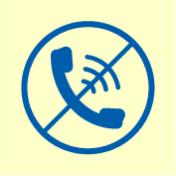 Do Not Call Service
Do Not Call Service
 Your Orders
Your Orders Hamara Mall Orders
Hamara Mall Orders

 Fixed Deposit (IFA) Partner
Fixed Deposit (IFA) Partner Loan (DSA) Partner
Loan (DSA) Partner Debt Management Partner
Debt Management Partner EMI Network Partner
EMI Network Partner Become a Merchant
Become a Merchant Partner Sign-in
Partner Sign-in
 Faster, Easier Gold Loan
Faster, Easier Gold Loan Digi Sarkar
Digi Sarkar Used Tractor Loan
Used Tractor Loan Check Loan Offer
Check Loan Offer Mobiles on EMI
Mobiles on EMI Live Videos
Live Videos


